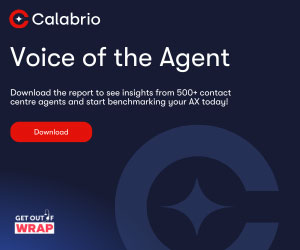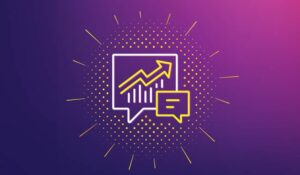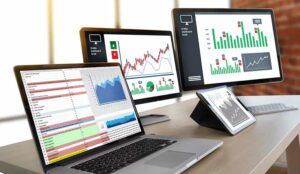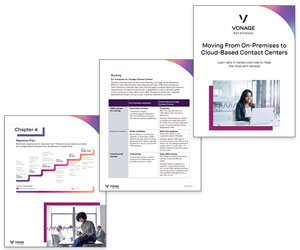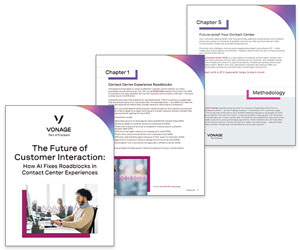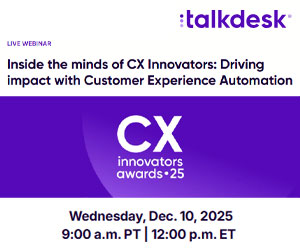Implementing speech analytics but not sure what to do?
In this article, we present a set of key questions to consider when implementing speech analytics in the contact centre.
Have You Got a Clear Goal for How to Use the Technology?
If you bring in speech analytics because it is the new “shiny” thing, without creating clear aims for what it should be used for, it will not drive as much value.
You don’t want to “retro-fit” the technology. You need to have a clear idea of what you want to achieve and how you want to achieve it.
This point is key when looking to find the right solution for you. You need to set your key goals and understand the value that you want to deliver first.
Two common goals include:
- Behavioural change – Using it as a coaching tool to find the most valuable learnings for coaching (just make sure it doesn’t become another tool to beat people with!)
- Process improvement – Finding out where things are going wrong and making recommendations for where to improve (just make sure that people act on the insight you share with them)

Yet there are so many applications of speech analytics. Just make sure that once you have an idea of what you want to deliver, you stay focused on that and don’t get distracted.
As Shameem Smillie, Director of Global Contact Centre Solutions at Mitel, says: “The key to getting good value out of speech analytics often involves focusing on a single capability and then building a process around that feature.”
Have You Prepped Your Call Recorders?
Understand your call recording solutions and the limitations of those.
Some recorders may limit access and there could be a cost involved in opening these up. Make sure to check this and factor this into your budget.
The quality of your call recorders can also make a huge difference. If you listen to your calls and you can barely understand what people are saying, then don’t expect technology to do it.

“When looking at some of the advanced features of your speech analytics check, with the supplier that your recording quality is suitable,” says Ian Robertson, a Data Analytics and Insight Specialist at The Forum.
“For example, if you are trying to identify a customer’s stress levels through the tiny wobbles in their speech, you will need to ensure that this is not being removed by your audio compression.”
To find out more about sentiment analysis, read our article: How to Measure Customer Emotion
Have You Got Stereo or Mono Recordings?
While speech analytics will work with both stereo and audio recordings, if you have got stereo, then that will give you more flexibility in what you can do.
Why? Because stereo differentiates between the two speakers.
With that being said, you can get great value from mono recordings where effectively you get a single transcript of the conversation between the advisor and customer.
Some speech analytics software may also be able to split mono recordings into separate speakers. If you have mono recording this may be a feature you will want to explore.
Can You Remove the Necessary Firewalls?
Consider who you need to engage with to remove firewalls. Getting the necessary permissions to do so can take a very long time.
“When we first introduced speech analytics, introducing the technology was easy. But getting IT to turn off some of the firewalls led to significant delays,” says Ian.
So, making sure that you have all the right people engaged early on in the process, to give quick access, should be a key part of your initial planning.
Do You Know Who Will Be in Your Analysis Team?
Speech analytics isn’t something that you can dabble in. It needs dedicated resource.
Some organizations bring in external expertise to run the system, whereas others train a small team who commit hours of their week into the technology. It should be a key priority for them.
Also, it’s key to remember that what you invest in the speech analytics tools, you need to invest more – in terms of effort and continual focus – on pushing the improvements through.
If your organization has not got a culture of continuous improvement, then things will fall flat and the insights that you are working so hard to create will be of significantly less value.
How Will You Present Your Insight Back to the Organization?

“At the top of the checklist should be deploying a solution that converts speech analytics data into accessible, useful reporting,” says Chris Marron, Director of Competitive and Market Intelligence at 8×8.
Think about how easy it is to clearly present your key learnings back to the business.
You may already have a good management information (MI) solution, in which case you will likely want to consider how simple it is to integrate with your prospective speech analytics system. This could make reporting a whole lot easier.
What Metadata Can You Use to Enhance the Solution?
Metadata is data that gives extra context to another set of data. Nowadays, this metadata is a key element of your speech analytics strategy.
Speech analytics is good on its own, but it can be great when combined with other data.
So look at how your prospective solution can integrate the data to create key findings and how you can get those key findings through to the people who can make a difference.
Is It Easy to Build Categories Within Your Prospective System?
Building categories to sort your speech analytics data into sets can be an area which requires lots of time and thought. However, this is becoming easier to do.
“We are now seeing AI category building hitting the market, which is one of the more exciting developments within the contact centre analytics field,” says Ian.
How much of a positive impact this will have depends on your strategy, but it’s best – when first using the technology – to focus on the basics and not the bells and whistles.
Will You Avoid Using Speech Analytics for Target Setting?
The use of speech analytics can fall flat when it is used to set targets. This is because people start to focus on accuracy rather than improvement.
Most contact centres will already have lots of other targets without asking for a load more.
If you are employing the technology to improve customer experience, you will have lots of other customer experience measures – like customer satisfaction (CSAT) or a net promoter score (NPS) – so why put another measure against it?
In this example, it would be much better to use speech analytics for diagnostics and problem solving.
Do You Acknowledge That Speech Analytics Should Not Replace Listening?
In theory, speech analytics can replace a lot of your listening processes, but – if that’s your goal – what you are effectively saying is: “I want to listen to our customers less!”
This is not a great place to start.
Instead, you should be looking at speech analytics as a method of enhancing your ability to listen. It can be an invaluable tool to help you listen to what matters.
Speech analytics allows you to focus on the areas of the call where you can make the biggest possible difference – the pain points in which you can coach key improvements.
Your human team should be working hand-in-hand with the technology.
What Do the Vendors Recommend?
We contacted some of the leading contact centre technology vendors to also garner their thoughts into what you should be looking out for when interested in implementing speech analytics.
Here are their responses.
Set Your Parameters Early

With any speech analytics tool, it is important that you are clear on what you want it to achieve.
Are you looking for it to help improve compliance levels, raise first contact resolution, or reduce customer churn, for example? It is important to set parameters from the outset.
You therefore need a tool that allows you to define the characteristics that are to be monitored and checked for each campaign in an independent, simple, and quick manner, and set the right evaluation criteria using different evaluators.
Depending on the business goals, that might cover everything from whether predefined phrases and keywords were used during a call to assessing the softer speech factors such as clarity, volume and even stress levels.
Contributed by: Niels Richthof at Enghouse Interactive
Think Carefully About Ease of Implementation
Now might not be the time for a lengthy integration project to adopt new technology – something that could lead to both financial and logistical challenges.
With this in mind, when you are reviewing your options for a speech analytics tool, think about these things:
- Will it require on-premises technology, or is it cloud-based?
- How easily will it integrate with my existing platform and processes?
- Will I require in-house analyst expertise to use the tool and access insights?
- How does the solution integrate with existing recording technology?
- How quickly can the data mined from calls translate into actionable business insights?

There are lots of other things to consider before choosing a speech analytics tool, when thinking about what your organization wants to achieve with the solution.
For example, if you want to use speech analytics to increase personalization, you’ll also want to consider: can the speech analytics platform be used to build a single view of the customer?
Contributed by: Vincent Van den Bossche at Wisper
Ensure That You Have Strong Network Connections
Speech-to-text, trend analysis, and automatic call routing are core features of speech analytics that should be implemented wherever possible to streamline processes, reduce inefficiencies, and improve customer experience.

However, in order for speech analytics to operate effectively and to provide the correct information to agents and management, proactive management of voice channels is a necessity.
Poor audio quality could result in inaccurate analytics or, worse still, the inability to utilize the data contained within a call.
Implementation of speech analytics can require a significant initial investment. It should therefore be supported by ensuring strong network quality at all times.
Contributed by: Matt Lawlor at Spearline
Look for Automatic Categorization
Another feature within a speech analytics solution which drives value within a contact centre is AI-powered automatic topic categorization.
This functionality enables contact centres to categorize and understand the thousands of interactions taking place in their contact centre across multiple channels.

It understands trends in customer conversations and analyses them to uncover areas which are important to contact centre objectives.
Using this functionality, organizations can quickly build queries to isolate and investigate problem areas, which can help meet business goals.
Contributed by: Alex Stenton-Hibbert at Business Systems
Put Together Your Analytics Team
Have a strategy around who manages your analytics solution, whether that involves outside help or training people within the contact centre to become analysts.

Also, think about the support that your vendor offers you and the experience they bring.
A good vendor will be upfront about what is possible and what’s not with the recordings and data available and will have a team full of professionals with lots of speech analytics deployment experience. They should provide guidance beyond the technology and its implementation.
Contributed by: Frank Sherlock at CallMiner
Use the Technology to Track Compliance
Maintaining compliance is crucial for all contact centres, especially for those involved in financial services, telemarketing, and debt collection.
Having a feature that enables contact centres to predefine essential words and phrases that advisors must use during conversations to keep business operations legal may be important if you work in one of these fields.
Consider How Real-Time Analytics Could Help You Meet Your Goals
Real-time analytics can be used for a variety of purposes. It listens for keywords and phrases and also specific vocal inflections.

Through this functionality, it can detect when a customer is becoming frustrated, and the advisor can then be passed information on how to mitigate dissatisfaction.
With real-time analytics, there is also real-time prompting. This is usually a feature on the advisor’s desktop that tracks the progress of each call, highlighting opportunities for alternative product choices, upsells, and cross-sells.
Contributed by: Yasir Bugrara at Voci Technologies
Make Sure That There Is a Simple Search Function
As speech analytics tools work by transcribing spoken text before analysing it, being able to search transcriptions allows you to find calls containing keywords and phrases, providing you with a ready-made list of calls to inspect for quality reasons.

You also want to make sure you can build categories easily, especially for topic and trend spotting.
Trend spotting could involve looking out for combinations of words and phrases to understand first call resolution, analysing sentiment to find broken processes or identifying high levels of silence on calls to highlight training or systems issues.
Contributed by: Craig Farley at IP Integration
Think Carefully About Advisor Evaluation
Speech analytics systems can help to automate some of your quality assurance (QA) process, giving you more time to focus on one-to-one coaching, using some great insights.

How can speech analytics do so? By assessing things like an advisor’s formality, as well as their sales negotiation and closing techniques, through predetermined keywords and phrases.
Call scores can then be created, with contact centres inputting their own scoring criteria for their advisors, and the software analysing the conversation against that.
Contributed by: Zofia Bobrowicz Cohn at RingCentral
Choose a Solution That Covers All of Your Channels
Understanding the full customer journey is an essential part of improving contact centre service.

If your speech analytics solution covers multiple channels, you can see why your customers are bouncing in between channels – a likely cause of dissatisfaction.
Armed with actionable insights into the entire customer journey, contact centres can make fast, confident decisions about the best ways to improve customer experience and enhance efficiency.
Contributed by: Tony Lorentzen at Nuance
Look for CRM Integration
To gain more insight from your speech analytics system, it should integrate with your CRM data to better identify improvement areas.

Transcribed calls can be automatically logged into your CRM platform and, associated with contacts, cases, and custom objects, will enable you to prioritize key insights.
With these key insights, you can drill down into ineffective conversations and pick out the most effective ones.
Contributed by: Tim Kimber at Vonage
Understand How to Best Flag Up Calls
Choose a solution with the functionality to highlight important calls to contact centre supervisors.
Each organization can designate which calls are to be flagged based on their own unique specifications.
For example, the speech analytics software can pick up on a caller using profane language or user-defined words like “fire” or “smoke”.
This functionality can be utilized for more advanced tasks as well, such as flagging calls containing references to specific products – providing insight into the customer’s needs.
From an advisor training aspect, businesses can monitor employee performance and zero in on where agents could benefit from additional training.
Contributed by: Nick Hudson at Natterbox
Be Proactive With Speech Analytics
Use analytics to create a complete view of customer interactions. Identify the one word that crops up in every conversation or highlight when 90% of customers are asking the same question to focus on what really matters for improved customer service.
By doing this you can also anticipate a customer’s future needs, which can be particularly useful at a time when customer demands are increasing and changing in equal measures.
By analysing all customer interactions, this provides contact centres with insights into the customer journeys, which will enable the organization to be more proactive
Know How You Want Analytics to Appear on Advisors’ Desktops
One use of speech analytics is to provide real-time prompts to advisors for how they can adapt their approach to a call, through their desktops.

But don’t just install this technology. Think first about how you want it to look.
You can also run desktop analytics to detect what applications are being used during customer interactions and then unearth any slow or badly designed applications that make agents’ lives harder than they need to be.
Contributed by: Ed Creasey at Calabrio
To download our checklist in a handy pdf form, click here.
For more on contact centre analytics, check out our articles:
- An Introduction to… Contact Centre Analytics
- 16 of the Best Uses for… Contact Centre Analytics
- What Is Customer Journey Analytics and How Can It Benefit Your Organization?
Author: Robyn Coppell
Reviewed by: Hannah Swankie
Published On: 24th Feb 2021 - Last modified: 8th Oct 2025
Read more about - Technology, 8x8, Alex Stenton-Hibbert, Business Systems, Calabrio, CallMiner, Craig Farley, Ed Creasey, Enghouse Interactive, Frank Sherlock, Free Downloads, IP Integration, Mitel, Natterbox, Niels Richthof, Nuance, RingCentral, Spearline, Speech Analytics, The Forum, Tim Kimber, Voci Technologies, Vonage, Wisper, Yasir Bugrara




